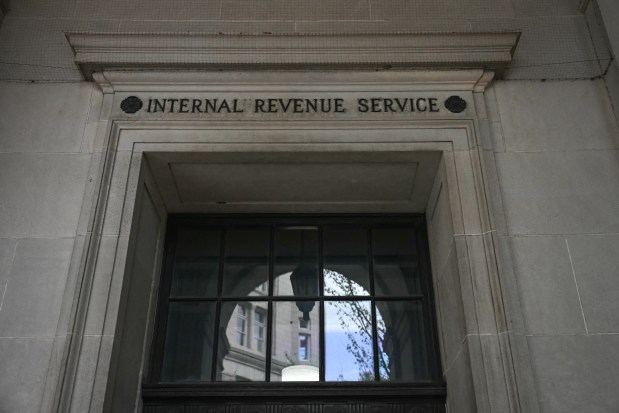This month marks the 75th anniversary of the North Atlantic Treaty Organization. Russian aggression in Europe has undoubtedly renewed the pact’s sense of purpose, but what its future will look like is not yet clear.
The trajectory of the war in Ukraine will be the determining factor in NATO’s path, which, in turn, rests on political decisions within the United States. The European countries that make up the bulk of NATO and need its security the most can only wait to learn what fate lies ahead, at the mercy of dysfunctional American politics.
Will Congress pass the Ukraine aid package before it’s too late for Ukraine? And will Donald Trump prevail in November in winning a second term? NATO has three possible paths, and more than anything else, the answers to these two questions will shape it.
NATO’s best possible future comes with a yes to the first question and no to the second. This would provide Ukraine with its best chance to prevail against Russia, with NATO’s help, and would ensure a durable American commitment to NATO for the future, both of which should deter future Russian aggression. Even if Ukraine were not able to militarily prevail, it should be able to withstand an all-out defeat and would be in a stronger position to negotiate an end to the conflict.
This outcome would bolster NATO’s renewed sense of purpose with a renewal of confidence too. A battle-hardened Ukraine would likely be offered membership in NATO (or some other security partnership) as well as the European Union, giving Western European nations a greater buffer between them and the historic Russian threat.
Time is not on NATO’s side, though, and any significant delay in the passage of additional American aid for Ukraine could be fatal. Though European countries are now much more serious about filling the gap in military assistance, they lack the military industrial capacity in the near term.
Russia is on the offensive, enabled by months of artillery shortages for Ukraine’s army. In recent battles, Russia’s firepower advantage has been at least fivefold that of Ukraine, and that’s set to double in the coming weeks without an influx of supplies from Ukraine’s partners. No amount of bravery or determination can overcome such an imbalanced onslaught for long.
With House Republicans in the United States — or more specifically, the small but powerful subset aligned with Trump — continuing to stall a vote on the Ukraine aid package, the outlook is bleak, and Ukraine’s position is getting more tenuous by the day.
If that aid fails to come in time, and Ukraine ultimately falls to Russia’s assault, NATO has two possible paths ahead, depending on the results of the American election in November.
In a world where Ukraine falls but President Joe Biden wins a second term, we can expect a renewed and robust U.S. commitment to NATO, which has strong bipartisan support. If the pro-Russia wing of the Republican Party is shut out, Congress and the White House would likely go all in to boost European security as it confronts an emboldened Russia. Biden shouldn’t allow this to lead to a return to European complacency, though. One would think the risk of this period should make that less likely.
If Trump wins a second term in November, however, U.S. withdrawal from NATO is almost certain. This would likely ring the death knell for Ukraine as we know it, whether or not Congress passes a Ukraine aid package now. That aid package would, at best, act only as a stopgap relief.
Trump has made clear that, given the opportunity, he would end support for Ukraine and would pull America out of NATO. This is what Russian President Vladimir Putin is betting on and promoting with misinformation targeting American voters. This means delay is sufficient for him right now. If Putin’s troops can maintain even a stalled war until November, Putin knows he will be facing a weakened NATO without American firepower, should his preferred candidate prevail.
U.S. withdrawal from NATO would light a fire under Europe, likely leading to a mobilization of military industrial capacity unlike any Europe has seen since World War II, to prevent or defeat future Russian aggression against NATO member states. But that wouldn’t happen soon enough to save Ukraine, and an arms race on a continent with a long history of bloody war isn’t exactly a positive outcome for NATO either.
Rather than a confident and renewed NATO, European security would be led by a fearful and defensive one. That Europe would likely turn inward, too concerned with its own defense at home to play a positive role worldwide. This means that, at NATO’s 75th birthday, NATO’s future isn’t the only one in question.
Elizabeth Shackelford is the Magro Family Distinguished Visitor in International Affairs at Dartmouth College and a foreign affairs columnist for the Chicago Tribune. She was previously a U.S. diplomat and is the author of “The Dissent Channel: American Diplomacy in a Dishonest Age.”
Submit a letter, of no more than 400 words, to the editor here or email letters@chicagotribune.com.



